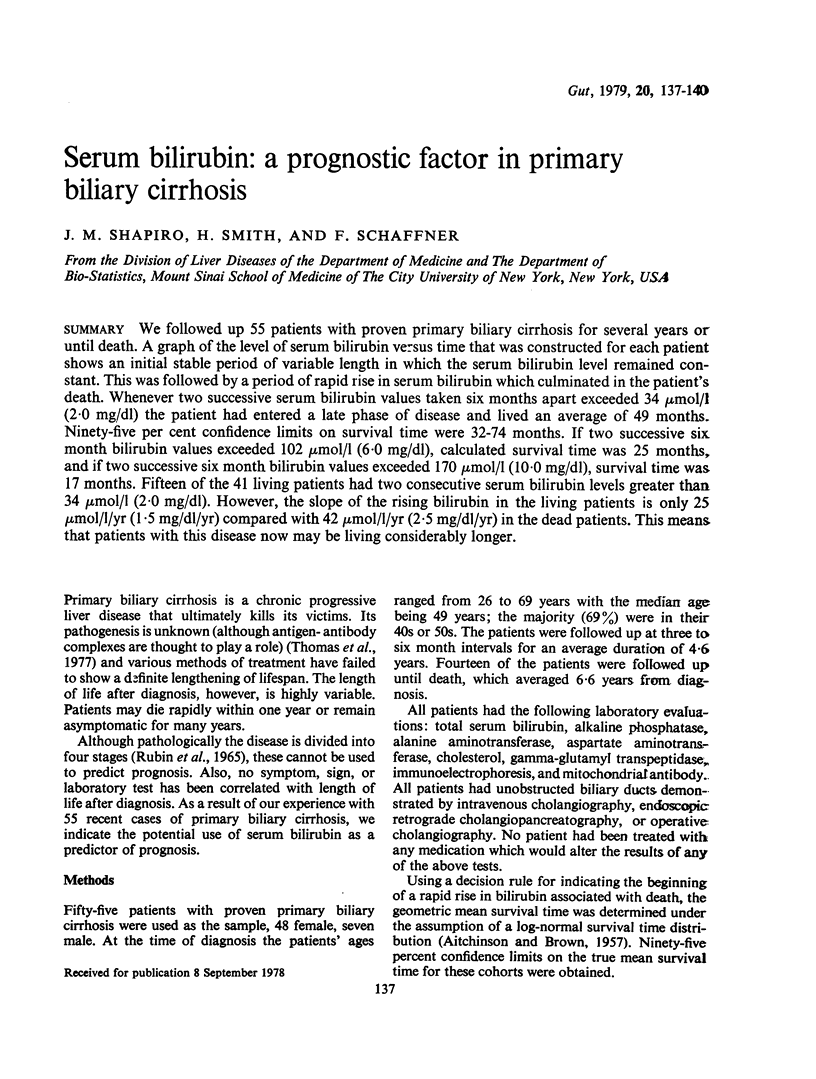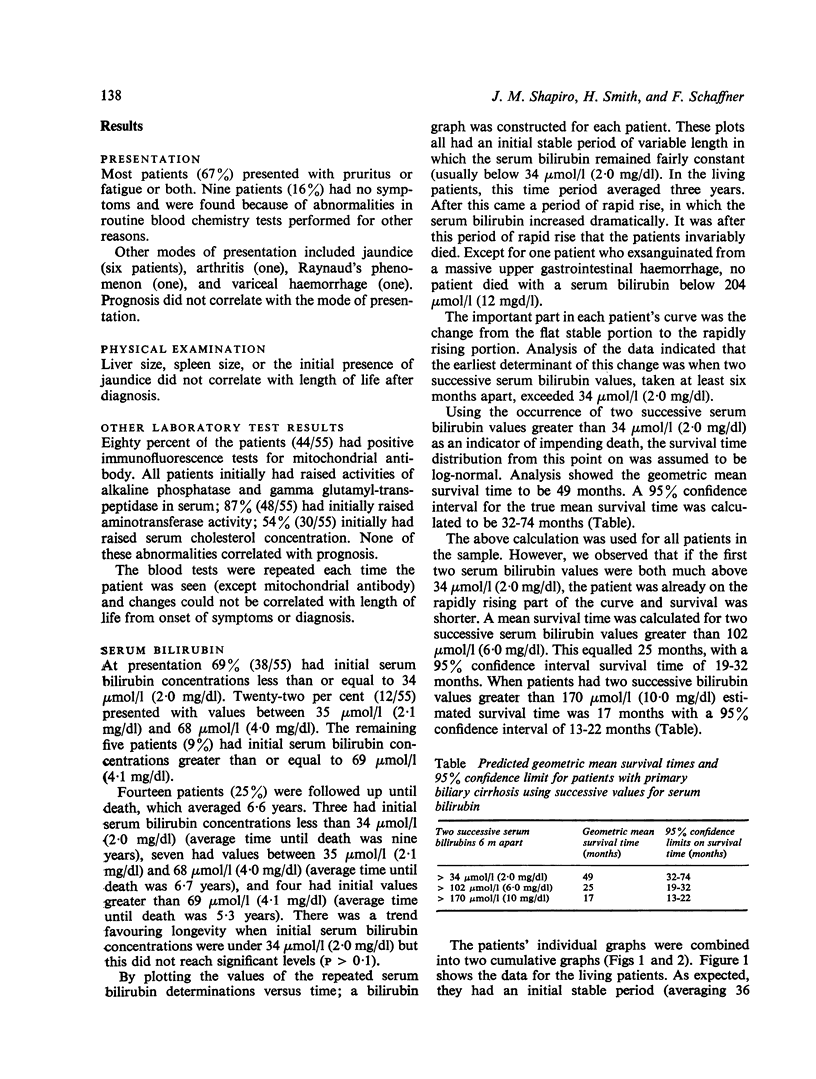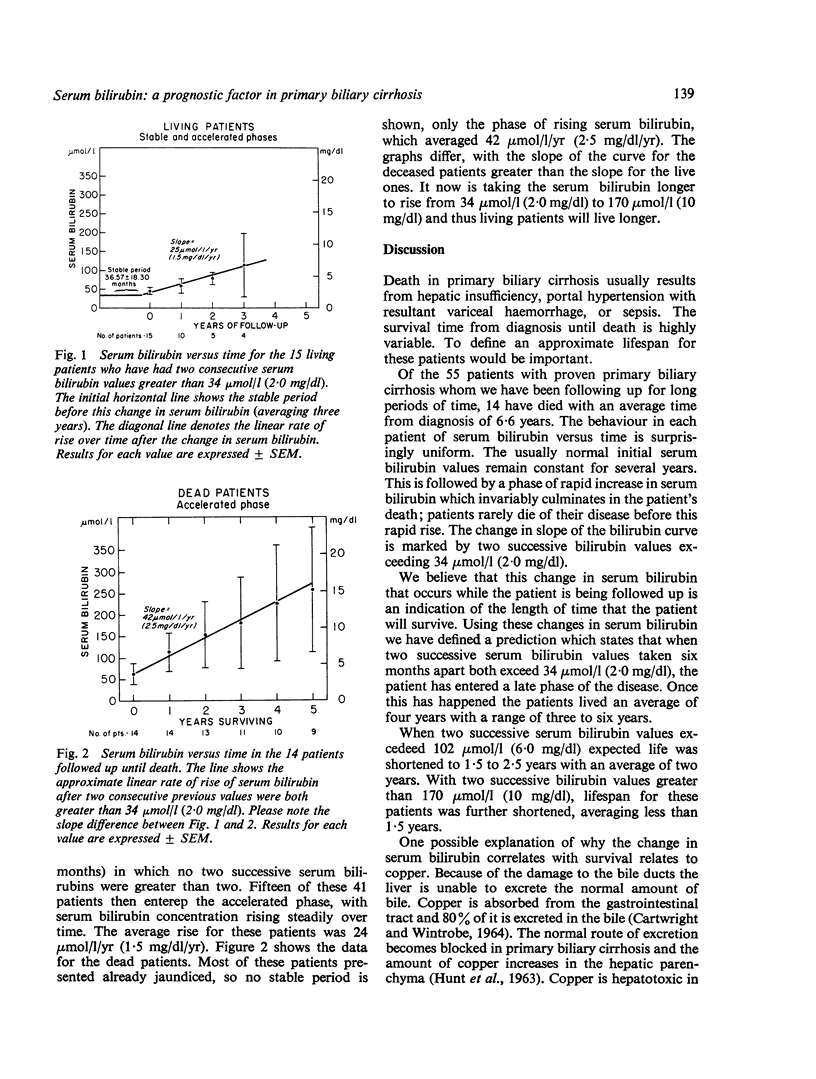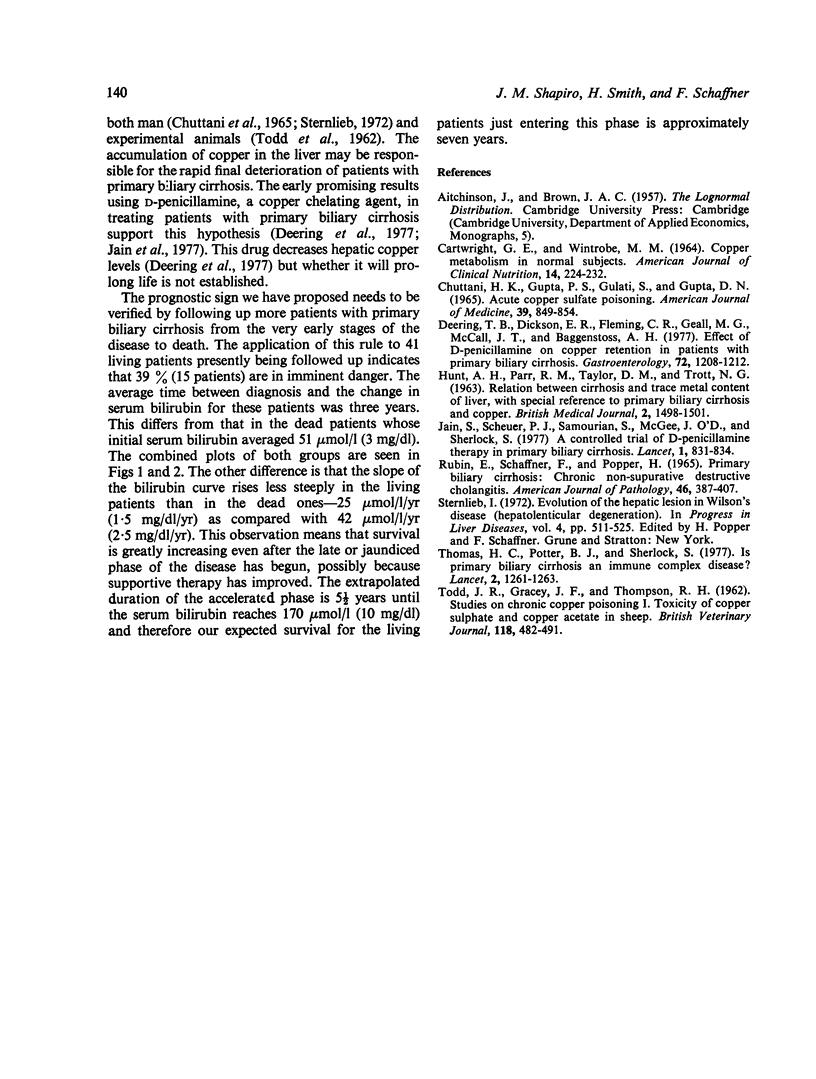Abstract
We followed up 55 patients with proven primary biliary cirrhosis for several years or until death. A graph of the level of serum bilirubin versus time that was constructed for each patient shows an initial period of variable length in which the serum bilirubin level remained constant. This was followed by a period of rapid rise in serum bilirubin which culminated in the patient's death. Whenever two successive serum bilirubin values taken six months apart exceeded 34 mumol/l (2.0 mg/dl) the patient had entered a late phase of disease and lived an average of 49 months. Ninety-five per cent confidence limits on survival time were 32-74 months. If two successive six month bilirubin values exceeded 102 mumol/l (6.0 mg/dl), calculated survival time was 25 months, and if two successive six month bilirubin values exceeded 170 mumol/l (10.0 mg/dl), survival time was 17 months. Fifteen of the 41 living patients had two consecutive serum bilirubin levels greater than 34 mumol/l (2.0 mg/dl). However, the slope of the rising bilirubin in the living patients is only 35 mumol/l/yr (1.5 mg/dl/yr) compared with 42 mumol/l/yr (2.5 mg/dl/yr) in the dead patients. This means that patients with this disease not may be living considerably longer.
Full text
PDF



Selected References
These references are in PubMed. This may not be the complete list of references from this article.
- CARTWRIGHT G. E., WINTROBE M. M. COPPER METABOLISM IN NORMAL SUBJECTS. Am J Clin Nutr. 1964 Apr;14:224–232. doi: 10.1093/ajcn/14.4.224. [DOI] [PubMed] [Google Scholar]
- Chuttani H. K., Gupta P. S., Gulati S., Gupta D. N. Acute copper sulfate poisoning. Am J Med. 1965 Nov;39(5):849–854. doi: 10.1016/0002-9343(65)90105-1. [DOI] [PubMed] [Google Scholar]
- Deering T. B., Dickson E. R., Fleming C. R., Geall M. G., McCall J. T., Baggenstoss A. H. Effect of D-penicillamine on copper retention in patients with primary billiary cirrhosis. Gastroenterology. 1977 Jun;72(6):1208–1212. [PubMed] [Google Scholar]
- HUNT A. H., PARR R. M., TAYLOR D. M., TROTT N. G. RELATION BETWEEN CIRRHOSIS AND TRACE METAL CONTENT OF LIVER WITH SPECIAL REFERENCE TO PRIMARY BILIARY CIRRHOSIS AND COPPER. Br Med J. 1963 Dec 14;2(5371):1498–1501. doi: 10.1136/bmj.2.5371.1498. [DOI] [PMC free article] [PubMed] [Google Scholar]
- Jain S., Scheuer P. J., Samourian S., McGee J. O. A controlled trial of D-penicillamine therapy in primary biliary cirrhosis. Lancet. 1977 Apr 16;1(8016):831–834. doi: 10.1016/s0140-6736(77)92778-7. [DOI] [PubMed] [Google Scholar]
- RUBIN E., SCHAFFNER F., POPPER H. PRIMARY BILIARY CIRRHOSIS. CHRONIC NON-SUPPURATIVE DESTRUCTIVE CHOLANGITIS. Am J Pathol. 1965 Mar;46:387–407. [PMC free article] [PubMed] [Google Scholar]
- Sternlieb I. Evolution of the hepatic lesion in Wilson's disease (hepatolenticular degeneration). Prog Liver Dis. 1972;4:511–525. [PubMed] [Google Scholar]
- Thomas H. C., Potter B. J., Sherlock S. Is primary biliary cirrhosis an immune complex disease? Lancet. 1977 Dec 17;2(8051):1261–1263. doi: 10.1016/s0140-6736(77)92666-6. [DOI] [PubMed] [Google Scholar]


